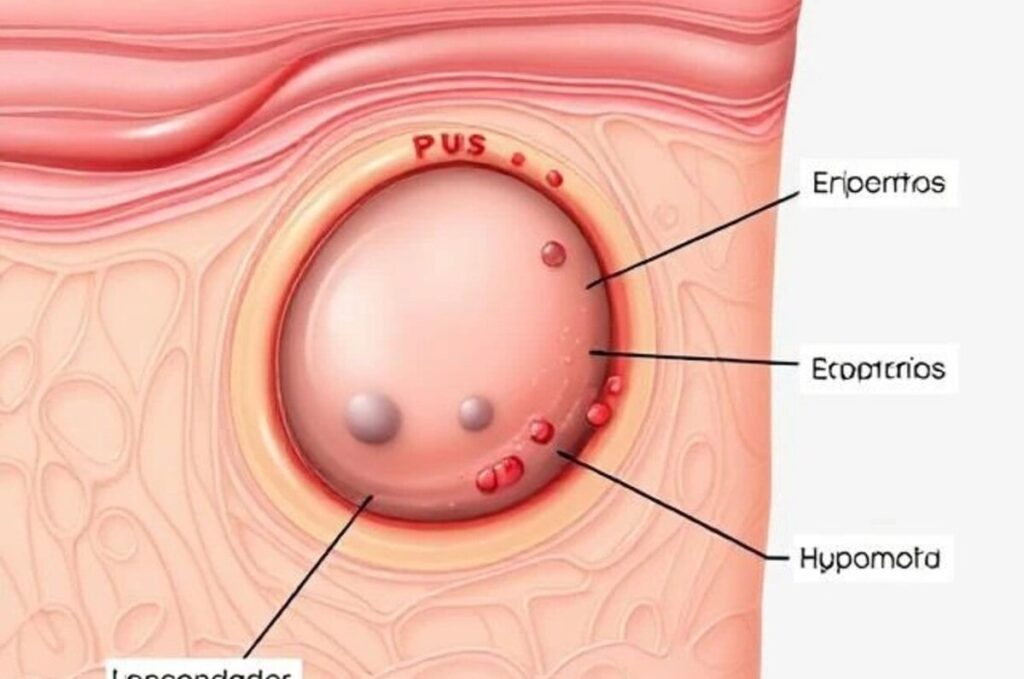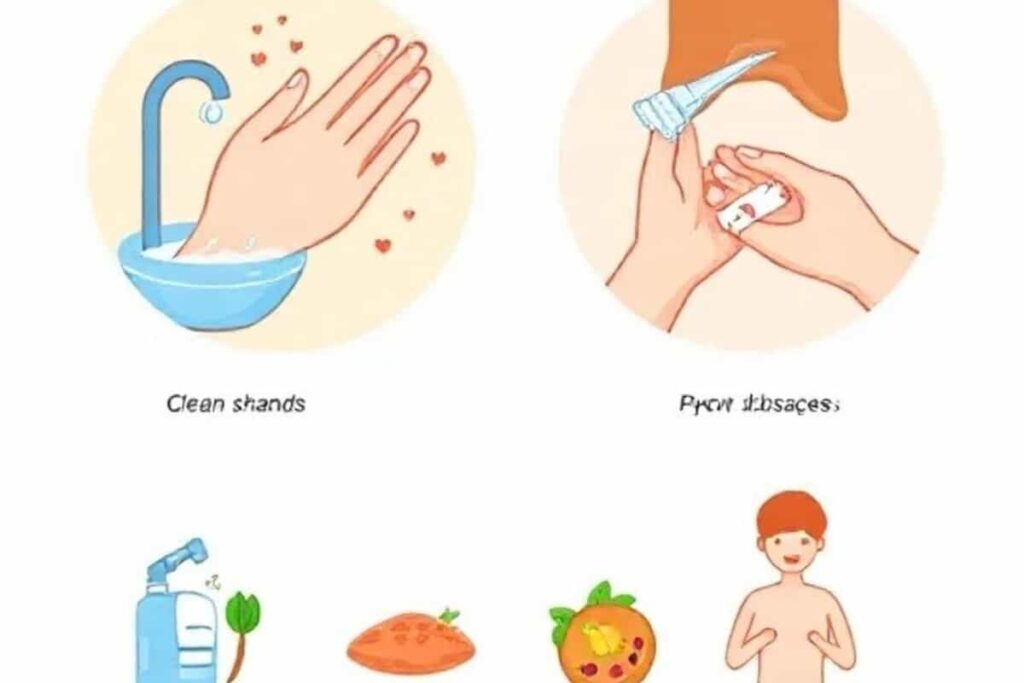Skin Abscess ICD 10: Complete Guide for Patients and Beginners
Introduction
Have you ever noticed a painful, swollen lump under your skin that was filled with pus? That’s called a skin abscess. It is a very common skin condition, usually caused by a bacterial infection. While doctors treat abscesses with drainage and antibiotics, hospitals and insurance companies also need a way to record and classify these conditions.
This is where Skin Abscess ICD 10 comes in. ICD 10 (International Classification of Diseases, 10th Revision) is a medical coding system used worldwide to describe diseases in a standardized way. Each condition, including skin abscess, has its own code. This makes communication between doctors, hospitals, and insurance providers much easier.
In this guide, we’ll explain in simple words what a skin abscess is, why ICD 10 coding matters, and the exact codes used for different types of skin abscesses. We’ll also cover causes, risk factors, and the importance of accurate documentation.
What is a Skin Abscess?
A pus-filled pocket that develops beneath the skin is called a skin abscess. Pus is a viscous fluid composed of tissue fragments, microorganisms, and dead white blood cells.Your body creates pus as a defense mechanism against infection.

Main Features of a Skin Abscess:
- Redness and swelling in the area
- Warm feeling when touched
- Pain and tenderness
- Visible lump or bump
- Fluid discharge (when it bursts)
Abscesses can occur anywhere but are more common on:
- Face
- Neck
- Armpits
- Buttocks
- Legs and arms
Causes of Skin Abscess
A skin abscess usually happens when bacteria enter the skin. The most common germ responsible is Staphylococcus aureus (Staph bacteria).
Main Causes:
- Bacterial infection – The top cause; bacteria enter through cuts, scratches, or insect bites.
- Ingrown hair – When a hair follicle gets infected, it can turn into an abscess.
- Blocked oil or sweat glands – If glands get clogged, pus can collect.
- Foreign objects – Splinters, glass, or dirt under the skin may trigger infection.
Risk Factors (Who is more likely to get it?):
- People with weak immune systems (e.g., diabetes, HIV)
- People with poor hygiene
- Those living in hot, humid climates
- Athletes sharing equipment or towels
- People with skin injuries or surgical wounds
👉 Understanding the causes is important, because accurate coding in Skin Abscess ICD 10 often requires knowing whether the abscess is linked to another condition (like diabetes or post-surgery infection).
Why ICD 10 Coding Matters for Skin Abscess
Medical coding may sound boring, but it plays a big role in your healthcare journey.
For Patients:
- Ensures your diagnosis is recorded properly
- Helps with insurance claims (reduces rejection risk)
- Makes medical records easy to transfer between hospitals
For Doctors:
- Helps document the exact condition
- Guides treatment planning
- Provides data for research and statistics
For Insurance Companies:
- Makes billing and reimbursement clear
- Reduces errors in claim processing
So when your medical report says “Skin Abscess ICD 10: L02.3”, it’s not just a random number. It’s an international code that clearly identifies your condition.
Skin Abscess ICD 10 Codes (Overview)
In ICD 10, skin abscesses are grouped under the category L02 – Cutaneous abscess, furuncle, and carbuncle.
- Cutaneous abscess = an abscess under the skin
- Furuncle = a boil caused by infected hair follicle
- Carbuncle = a cluster of boils that form a larger infected area
These all fall under the same L02 series of codes.
Detailed ICD 10 Codes for Skin Abscess by Site
Doctors don’t just write “skin abscess.” They use specific codes depending on where the abscess appears.
Here’s a table for better understanding:
| ICD 10 Code | Description | Example |
| L02.0 | Cutaneous abscess of face | Abscess on cheek or forehead |
| L02.1 | Cutaneous abscess of trunk | Abscess on chest, abdomen, or back |
| L02.2 | Cutaneous abscess of limb | Abscess on arm, leg, hand, or foot |
| L02.3 | Cutaneous abscess of buttock | Painful pus lump on buttock |
| L02.4 | Cutaneous abscess of neck | Lump with pus on neck |
| L02.8 | Cutaneous abscess of other sites | Abscess on unusual sites (e.g., ear, scalp) |
| L02.9 | Cutaneous abscess, unspecified | Used when the site is not documented |
Skin Abscess ICD 10: Complete Guide
How is a Skin Abscess Diagnosed?
Most skin abscesses are diagnosed through a simple physical examination. Doctors usually identify them by looking at the skin and checking for swelling, redness, tenderness, and the presence of pus.
However, in some cases, additional tests are required:
1. Physical Examination
- Doctor inspects the area
- Checks for pain, warmth, and pus
- Determines the size and depth of the abscess
2. Imaging Tests
- Ultrasound: Shows whether a lump is filled with pus or just swollen tissue
- CT scan or MRI: Rarely used, only when the abscess is deep inside the body
3. Laboratory Tests
- Culture Test: Doctor may take a sample of pus to identify the bacteria causing infection
- Blood Tests: Used if fever is present, or if infection is spreading
👉 Accurate diagnosis is important because ICD 10 coding often depends on the exact location and type of infection.
Treatment of Skin Abscess
The abscess’s size, location, and severity all affect how it is treated. Some small abscesses heal on their own, while others require medical attention.
1. Home Remedies for Small Abscesses
- Warm compress: Applying heat helps increase blood flow and may encourage drainage
- Keeping the area clean: Wash with mild soap and water
- Avoid squeezing: Never try to pop an abscess, as it can spread infection
2. Medical Treatments
- Incision and Drainage (I&D):
- The most common treatment
- Doctor numbs the area, makes a small cut, and drains the pus
- Wound is cleaned and covered with a sterile dressing
- Antibiotics:
- Given when the abscess is large, deep, or multiple abscesses are present
- Common antibiotics include clindamycin, doxycycline, or trimethoprim-sulfamethoxazole
- Pain Management:
- Over-the-counter pain relievers like ibuprofen or acetaminophen
- Follow-up Care:
- Doctor may check healing progress after a few days
- Dressing changes may be needed
👉 Proper treatment helps prevent the abscess from coming back and avoids complications like cellulitis or sepsis.
Recovery Time for Skin Abscess
- Small abscess: May heal in 7–10 days
- Larger abscess (after drainage): Healing may take 1–2 weeks
- Complicated abscess (with infection): Recovery can take several weeks with antibiotics
Prevention of Skin Abscess
While not all abscesses can be prevented, there are steps you can take to reduce your risk:
Daily Habits
- Wash hands regularly with soap and water
- Keep skin clean, especially after sweating
- Avoid sharing razors, towels, or personal items
Skin Protection
- Treat cuts and wounds immediately with antiseptic
- Cover wounds with clean bandages
- Wear protective clothing during sports or outdoor work
Health & Immunity
- Maintain a balanced diet rich in vitamins and minerals
- Manage chronic illnesses like diabetes properly
- Strengthen your immune system with enough sleep and exercise
👉 Prevention is key, because a healthy lifestyle reduces the chance of recurring abscesses.
Why Accurate ICD 10 Coding Matters for Insurance and Billing
For patients, correct coding ensures that your insurance claim is accepted without unnecessary delays.
Example Scenario:
- If a doctor writes “skin abscess” without coding, the insurance company may reject the claim.
- If the correct ICD 10 code (e.g., 3) is used, the claim is processed quickly.
Accurate coding avoids confusion, saves time, and ensures proper reimbursement for hospitals.
Common Mistakes in Skin Abscess ICD 10 Coding (Recap)
- Using cellulitis code (L03) instead of abscess code (L02)
- Writing unspecified code (L02.9) when the location is clear
- Confusing cysts with abscesses
- Forgetting to code multiple abscesses in different body parts
FAQs
Q1. What is Skin Abscess ICD 10?
A: It’s the medical code used to classify skin abscesses, usually under L02 series.
Q2. What is the ICD 10 code for a limb abscess?
A: L02.2 – Cutaneous abscess of limb
Q3. How is Skin Abscess ICD 10 different from cellulitis?
A: Abscess has pus (L02), cellulitis doesn’t (L03).
Q4. Can small abscesses heal without treatment?
A: Sometimes, but most need medical care for proper healing.
Q5. Why is Skin Abscess ICD 10 important for insurance?
A: Ensures claims are processed correctly and reduces delays.
Q6. Can abscess recur?
A: Yes, especially with poor hygiene or underlying conditions.
Q7. What is the code for a face abscess?
A: L02.0 – Cutaneous abscess of face
Q8. Is drainage always needed for abscess?
A: Not always; small abscesses may heal on their own, but drainage is common.
Q9. Can children have Skin Abscess ICD 10 codes assigned?
A: Yes, the ICD 10 system applies to all ages.
Q10. How to prevent abscess recurrence?
A: Good hygiene, healthy diet, prompt wound care, and immune support.
Patient Education: What to Ask Your Doctor About a Skin Abscess
When diagnosed with a skin abscess, consider asking your doctor:
- What caused my abscess?
- Do I need antibiotics or just drainage?
- How long will it take to heal?
- What can I do to prevent another abscess?
- Which Skin Abscess ICD 10 code applies to my condition?
Conclusion
A skin abscess is a common skin infection that results in a pus-filled lump. While it can be painful and uncomfortable, it is usually treatable with simple medical care such as drainage and antibiotics.
The ICD 10 coding system ensures that conditions like skin abscess are recorded in a standardized way. The main category for Skin Abscess ICD 10 is L02, with specific codes for different body sites like the face, trunk, limbs, buttock, and neck.
For patients, understanding ICD 10 codes helps with insurance claims and gives transparency in healthcare. For doctors and coders, correct coding ensures accurate records and billing.
👉 Remember: If you notice a painful, pus-filled lump under your skin, don’t ignore it. See a doctor for proper diagnosis, treatment, and care. With the right treatment and preventive steps, skin abscesses can heal quickly and complications can be avoided.
